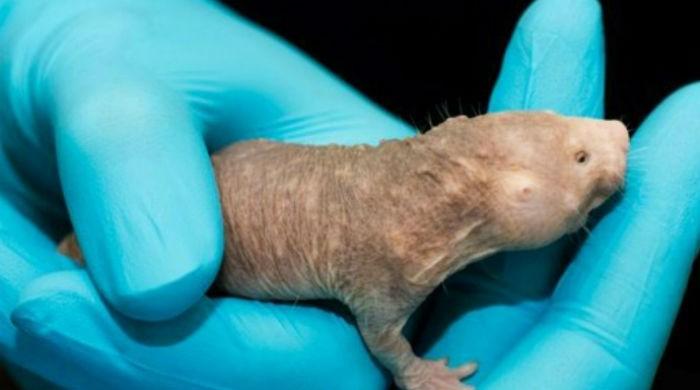Naked mole-rats can survive without oxygen: study
April 24, 2017

MIAMI: When deprived of oxygen, naked mole-rats have a unique ability to convert sugar to energy, a skill that might one day help treat victims of heart attack and stroke, researchers said Thursday.
These cold-blooded mammals have long been a source of fascination for scientists because they can live 30 years, rarely get cancer and do not seem to feel most kinds of pain.
Researchers reported in the journal Science that when naked mole-rats are exposed to oxygen levels low enough to kill a person in minutes, they can survive for at least five hours.
They do so by acting like plants, converting fructose to energy to keep their brain cells alive.
In the absence of oxygen, large amounts of fructose flowed into their bloodstreams, and were carried to brain cells.
"The naked mole-rat has simply rearranged some basic building blocks of metabolism to make it super-tolerant to low-oxygen conditions," said lead author Thomas Park, professor of biological sciences at the University of Illinois at Chicago.
The rodents go into a state of suspended animation, moving very little and lowering their pulse and breathing rate. They use fructose to survive until oxygen is available again.
"The naked mole-rat is the only known mammal to use suspended animation to survive oxygen deprivation," said the study.
There is a reason naked mole-rats have this unusual metabolism -- it could be an adaptation to living in crowded burrows where oxygen is hard to find.
"The air can get very stuffy in these underground burrows," said professor Gary Lewin, a co-author and researcher at the Max Delbruck Center for Molecular Medicine in the Helmholtz Association.
Their heart rate drops from 200 beats per minute to about 50.
Once oxygen becomes available again, they take a whiff and start stirring again, as if nothing ever happened, the report said.
If scientists could harness this process and apply it humans, it could aid the survival of people who are deprived of oxygen during cardiac crises like heart attacks or strokes.
"Our work is the first evidence that a mammal switches to fructose as a fuel," said Lewin.
"Theoretically, very few changes might be needed to adopt this unusual metabolism."
But it remains to be seen if human cells could be coaxed into behaving this way.
"Patients who suffer an infarction or stroke experience irreparable damage after just a few minutes of oxygen deprivation," he noted.











